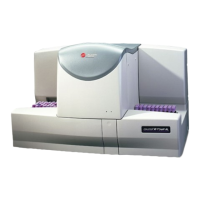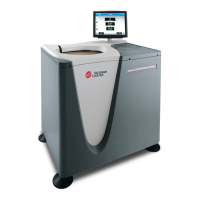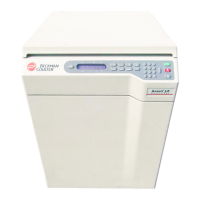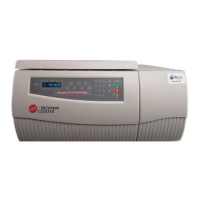PN 177196BB
4-23
QUALITY ASSURANCE
INTERPRETING AND USING THE XB/XM DATA
4
.
WHAT TO DO IF AN XB/XM BATCH IS OUT
1 Assess the situation.
a. Review the XM graphs and XM batch means to identify the out-of-limit parameter and note
the direction of the change (increased or decreased).
b. The physiological range of some parameters, like WBCs and Plts, makes it difficult to assess if
a problem really exists or the diversity of the values has cause the problem.
c. Generally more than one parameter may show a change.
d. It is also important to note any parameter that may still be inside the limit but shows a
significant change.
2 Consider the two situations that can cause an out-of-limits batch:
a. A change in the patient population.
b. A change in the system: the instrument’s components, calibration, or reagents.
3 Check for changes in the patient population.
a. Look for a change in the overall patient population.
1) One or more new patient types were added to the population.
2) One or more patient types are no longer part of the population.
3) Possible seasonal change of the patient population (hospitals or clinics in resort areas)
b. If a change in the overall patient population is probable:
1) Future XM batch results will also be outside the limits.
2) New XM mean values based on the current population must be established and used.
c. If a change in the overall patient population is not probable, is it possible the population
appears to have changed because the batch of 20 patients does not truly represent the total
population. (Remember that up to five samples can be deleted if necessary.) Look for:
1) A very abnormal patient specimen.
2) A number of the same type of patient, such as dialysis patients, in the same batch instead
of random sampling.
3) Non-reportable results where a batch of results was biased by short samples or erroneous
data accumulated before a reagent/instrument problem was identified and solved.
d. If a change in the patient population is doubtful, all the results in the current XM batch are
physiologically possible, and random sampling is verified, consider an instrument problem.
4 Check for an instrument problem if the XM batch results go “out” and stay out.
a. Can be a gradual change caused by a calibration drift or a component going bad over time.
b. Can be a sudden change caused by a component failure.
c. After the instrument problem is corrected, the XB/XM results should come back within limits.
5 Call your Beckman Coulter Representative for assistance if necessary.

